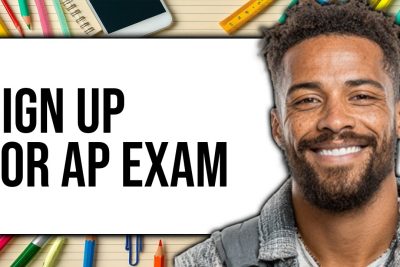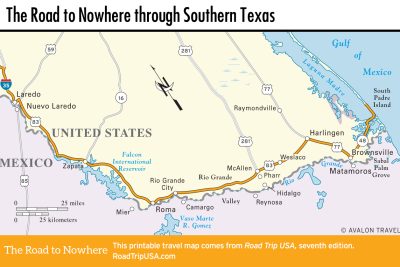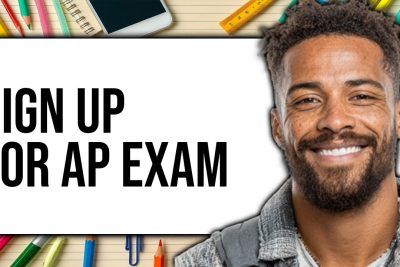
A Comprehensive Guide to VA Student Loan Forgiveness Programs: Unlock Your Benefits Today!

Understanding VA Student Loan Forgiveness Programs
Veterans Affairs (VA) offers a range of student loan forgiveness programs designed to assist eligible veterans in managing their educational debt. These programs aim to alleviate the financial burden on veterans who have served their country, ensuring they have access to higher education without the overwhelming stress of student loans. Understanding these programs is crucial for veterans looking to take advantage of available benefits.
Key VA Student Loan Forgiveness Programs include:
- Public Service Loan Forgiveness (PSLF): This program is available to veterans who work in qualifying public service jobs. After making 120 qualifying monthly payments, borrowers may have the remaining balance of their Direct Loans forgiven.
- Income-Driven Repayment (IDR) Forgiveness: Veterans enrolled in an income-driven repayment plan can have their loans forgiven after 20 or 25 years of qualifying payments, depending on the plan.
- Veteran Readiness and Employment (VR&E): This program assists veterans with service-connected disabilities to prepare for, find, and maintain suitable employment. It may cover educational costs and offer loan forgiveness options.
To qualify for these programs, veterans must meet specific eligibility criteria, which may include the type of loan, employment status, and payment history. It’s essential for veterans to gather necessary documentation and stay informed about any changes to the programs, as policies may evolve. Engaging with VA representatives or financial advisors can provide clarity and guidance on navigating the application process for loan forgiveness.
Additionally, veterans should be aware of the potential tax implications associated with loan forgiveness. While many federal forgiveness programs do not require repayment of the forgiven amount, some state laws may treat forgiven loans as taxable income. Understanding these factors can help veterans make informed financial decisions and maximize the benefits available through VA student loan forgiveness programs.
Eligibility Criteria for VA Student Loan Forgiveness
To qualify for VA student loan forgiveness, borrowers must meet specific eligibility criteria established by the U.S. Department of Veterans Affairs. Understanding these requirements is crucial for veterans seeking financial relief from their educational debts. Below are the primary conditions that must be satisfied:
Basic Eligibility Requirements
- Veteran Status: You must be an eligible veteran who has served in the active military, naval, or air service and has been discharged under conditions other than dishonorable.
- Loan Type: The forgiveness program typically applies to federal student loans, including Direct Loans, Stafford Loans, and PLUS Loans. Private loans are generally not eligible.
- Service-Related Disability: Veterans with a service-connected disability may have a more streamlined process for forgiveness. Documentation of the disability is often required.
- Timeframe: The application for forgiveness must be submitted within a specific timeframe, usually linked to the discharge or disability status.
Additional Considerations
It’s important to note that while the eligibility criteria are primarily focused on veteran status and loan type, other factors may also play a role in the application process. For instance, veterans must demonstrate that they have made a good faith effort to repay their loans before applying for forgiveness. This may involve providing records of payment history and any communications with loan servicers regarding repayment plans.
Furthermore, borrowers should be aware of the necessary documentation required to support their application. This may include:
- DD Form 214 (Certificate of Release or Discharge from Active Duty)
- Proof of income or financial hardship
- Medical documentation for service-connected disabilities, if applicable
Staying informed about changes to VA loan forgiveness programs and understanding the specific requirements can significantly enhance a veteran's chances of successfully obtaining student loan relief.
Step-by-Step Application Process for VA Student Loan Forgiveness
Applying for VA student loan forgiveness can be a straightforward process if you follow the necessary steps diligently. This program is designed to assist veterans and active-duty service members in managing their student loan debt, providing relief and financial stability. Here’s a detailed step-by-step guide to help you navigate the application process effectively.
Step 1: Verify Your Eligibility
Before you start the application process, ensure that you meet the eligibility criteria for VA student loan forgiveness. Generally, this includes:
- Having served in the military, either on active duty or in the National Guard.
- Meeting the required length of service as defined by the VA.
- Possessing federal student loans that are eligible for forgiveness.
Once you confirm your eligibility, you can proceed to gather the necessary documentation.
Step 2: Gather Required Documentation
Collecting the right documents is crucial for a smooth application process. Make sure you have:
- Your DD Form 214 or other proof of military service.
- Information about your student loans, including loan servicer details and account numbers.
- Any additional documentation that may support your application, such as tax returns or income statements.
Having these documents ready will expedite the submission process and help avoid delays.
Step 3: Complete the Application Form
The next step is to fill out the VA student loan forgiveness application form accurately. Ensure that you:
- Provide all required personal information, including your military service details.
- Clearly indicate the type of loans you are seeking forgiveness for.
- Double-check all entries for accuracy before submission.
Once completed, submit the application to the designated VA office, either online or via mail, depending on the instructions provided.
Step 4: Follow Up on Your Application
After submitting your application, it’s important to stay proactive. You should:
- Keep a record of your submission date and any confirmation you receive.
- Contact the VA office if you haven’t received a response within the expected timeframe.
- Be prepared to provide additional information if requested.
Following these steps will help ensure that your application for VA student loan forgiveness is processed efficiently and effectively.
Common Myths About VA Student Loan Forgiveness Programs
Many veterans and service members seeking financial relief from student loans often encounter misconceptions regarding VA student loan forgiveness programs. These myths can lead to confusion and potentially hinder individuals from taking advantage of available benefits. Understanding the truth behind these myths is essential for making informed decisions about student loan management.
Myth 1: All Veterans Qualify for Automatic Loan Forgiveness
One prevalent myth is that all veterans automatically qualify for student loan forgiveness. In reality, eligibility for forgiveness programs depends on specific criteria, including the type of loan, repayment plan, and service history. While some programs, such as Public Service Loan Forgiveness (PSLF), offer opportunities for loan forgiveness to eligible veterans, not all loans or situations qualify. It’s crucial for veterans to thoroughly research the requirements of each program to determine their eligibility.
Myth 2: Forgiveness Programs Eliminate All Types of Student Loans
Another common misconception is that VA student loan forgiveness programs can eliminate all types of student loans, including private loans. However, most forgiveness programs primarily target federal student loans. This means that veterans with private loans may not benefit from these programs. It’s important for veterans to distinguish between federal and private loans and to explore alternative options for managing private loan debt.
Myth 3: You Can Only Apply for Forgiveness After Years of Payments
Many veterans believe that they must make payments for an extended period before they can apply for forgiveness. While certain programs, like PSLF, do require a specific number of qualifying payments, other options may allow for earlier forgiveness based on unique circumstances. Veterans should review the specific guidelines for each program to understand when they can apply for forgiveness and what steps they need to take to qualify.
In summary, dispelling these common myths about VA student loan forgiveness programs is vital for veterans seeking financial relief. By understanding the truth about eligibility, loan types, and application timelines, veterans can make better-informed decisions regarding their student loan debt.
Additional Resources for VA Student Loan Forgiveness and Support
Navigating the complexities of VA student loan forgiveness can be daunting, but there are numerous resources available to assist veterans in understanding their options and maximizing their benefits. These resources can provide crucial information, support, and guidance throughout the application process.
Official Government Websites
One of the most reliable sources of information is the official government websites dedicated to veterans’ affairs. The U.S. Department of Veterans Affairs (VA) provides comprehensive resources regarding student loan forgiveness programs specifically designed for veterans. Key sections to explore include:
- VA Education Benefits: Learn about various education benefits, including the Post-9/11 GI Bill and Montgomery GI Bill.
- Loan Forgiveness Programs: Detailed information on eligibility criteria and application processes for loan forgiveness.
- Veteran Readiness and Employment (VR&E): Support services for veterans seeking education and training.
Nonprofit Organizations and Support Groups
In addition to government resources, numerous nonprofit organizations and support groups are dedicated to helping veterans with student loans. These organizations often offer free workshops, counseling, and one-on-one assistance. Some notable ones include:
- American Legion: Provides advocacy and resources for veterans seeking education benefits.
- Veterans of Foreign Wars (VFW): Offers information on educational programs and financial assistance.
- Student Veterans of America (SVA): Focuses on empowering student veterans through education and community support.
Financial Counseling Services
For personalized assistance, financial counseling services can be invaluable. These professionals can help veterans create a strategic plan to manage their student loans effectively and explore forgiveness options. Many of these services are offered at low or no cost, making them accessible for veterans.
In addition, many universities and colleges have dedicated offices for veteran services that provide guidance on financial aid, scholarships, and loan forgiveness programs. These resources ensure that veterans can make informed decisions about their educational finances and find the support they need.
Did you find this article helpful? A Comprehensive Guide to VA Student Loan Forgiveness Programs: Unlock Your Benefits Today! See more here General.
Leave a Reply





Related posts